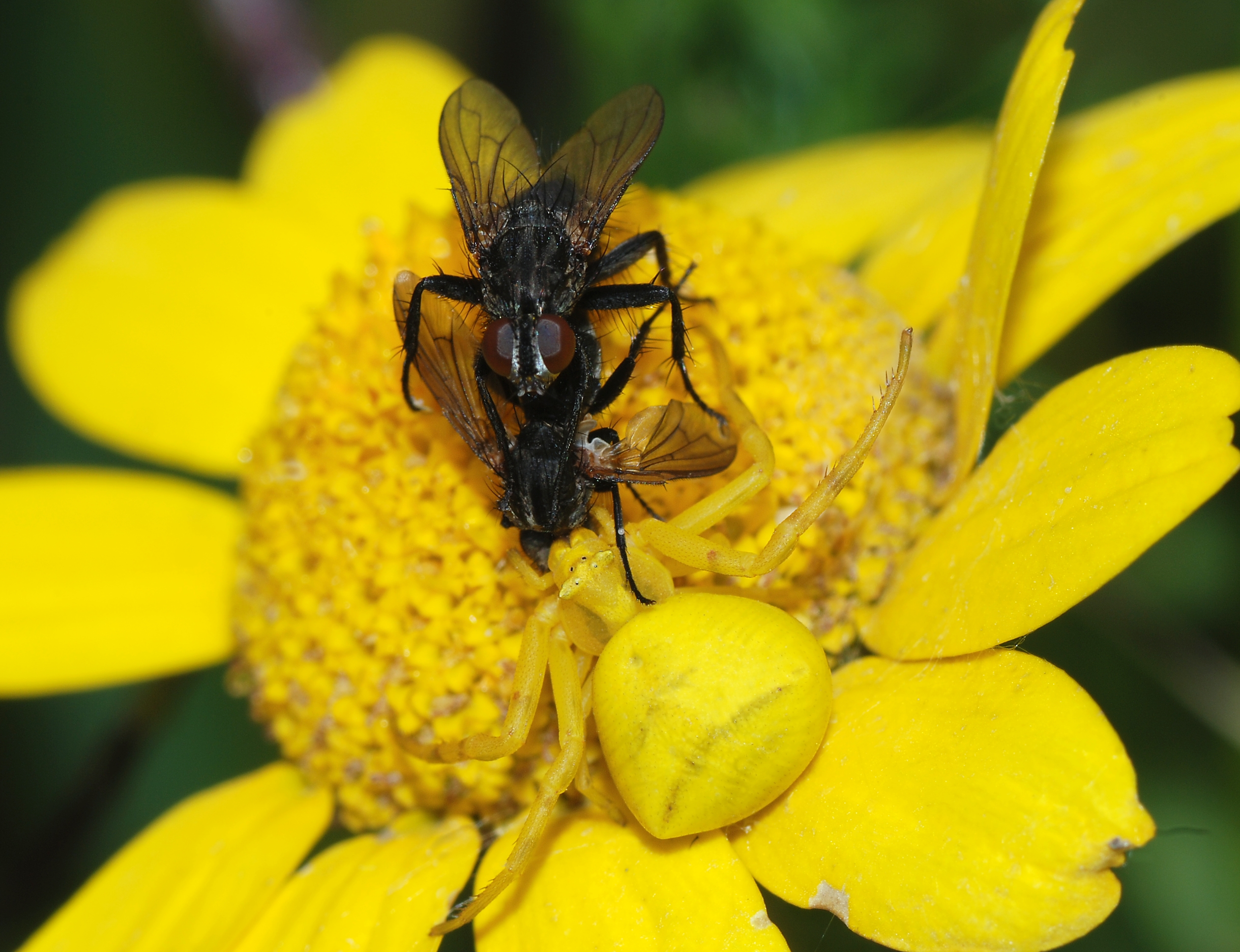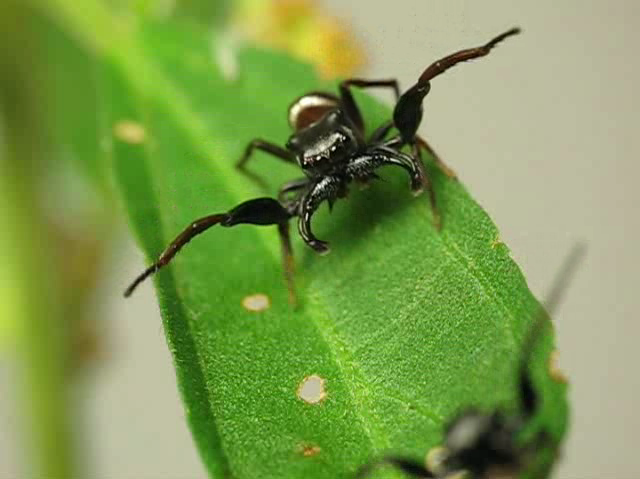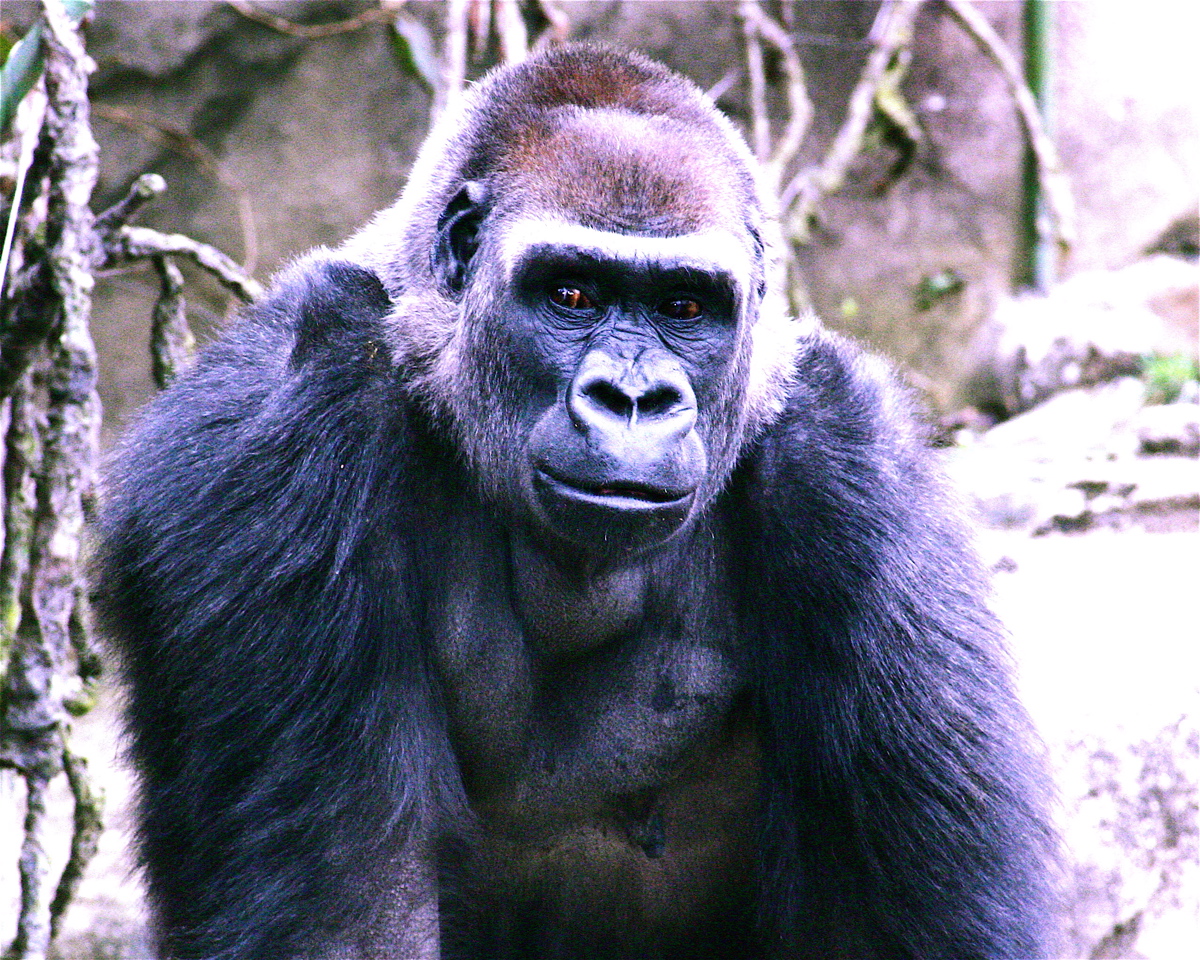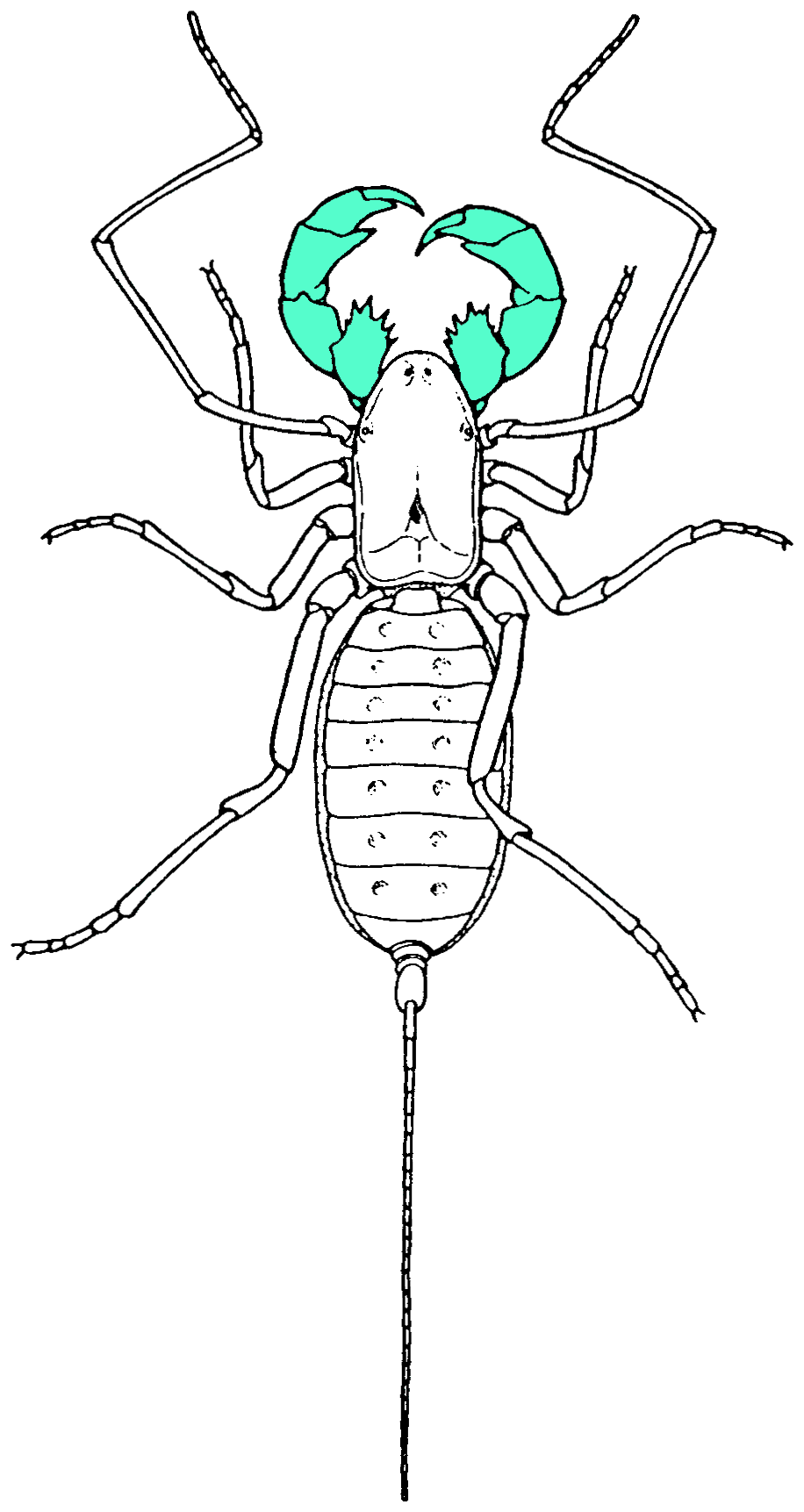|
Phrynus Longipes
''Phrynus longipes'' is a species of amblypygid (also referred to as whipspiders or tailless whipscorpions) native to the Caribbean region. They are protective of their territory, using their pedipalps to deter predators or unwanted visitors. Being nocturnal predators, they take shelter during the day and hunt primarily at night. ''Phrynus longipes'' feeds on primarily arthropods, but has been observed to prey upon small vertebrates. Description The body of ''Phrynus longipes'' rarely exceeds three quarters of an inch. The front legs have been recorded at sizes of almost ten inches long. They have two sets of four legs – like almost all arachnids. However, only the last six legs are used for walking while the first two are employed as sensors. ''Phrynus longipes,'' like all amblypygids, produce no venom or silk. ''Phrynus longipes,'' similar to many other amblypygid species, exhibits sexual dimorphism, using sexually dimorphic pedipalps for territorial display and combat. ... [...More Info...] [...Related Items...] OR: [Wikipedia] [Google] [Baidu] [Amazon] |
Amblypygid
Amblypygi is an order of arachnids also known as whip-spiders or tailless whip-scorpions, not to be confused with whip-scorpions or vinegaroons that belong to the related order Thelyphonida. The name "amblypygid" means "blunt tail", a reference to a lack of the flagellum that is otherwise seen in whip-scorpions. Amblypygids possess no silk glands or venom. They rarely bite if threatened but can grab fingers with their pedipalps, resulting in thorn-like puncture-injuries. As of 2023, five families, 17 genera, and around 260 species had been discovered and described. They are found in tropical and subtropical regions worldwide, mainly in warm and humid environments. They like to stay protected and hidden within leaf litter, caves, or underneath bark. Some species are subterranean; all are nocturnal. Fossilized amblypygids have been found dating back to the Carboniferous period, such as '' Weygoldtina''. Description Body-plan Being arachnids, Amblypygi possess two body-segments ... [...More Info...] [...Related Items...] OR: [Wikipedia] [Google] [Baidu] [Amazon] |
Ambush Predator
Ambush predators or sit-and-wait predators are carnivorous animals that capture their prey via stealth, luring or by (typically instinctive) strategies utilizing an element of surprise. Unlike pursuit predators, who chase to capture prey using sheer speed or endurance, ambush predators avoid fatigue by staying in concealment, waiting patiently for the prey to get near, before launching a sudden overwhelming attack that quickly incapacitates and captures the prey. The ambush is often opportunistic, and may be set by hiding in a burrow, by camouflage, by aggressive mimicry, or by the use of a trap (e.g. a web). The predator then uses a combination of senses to detect and assess the prey, and to time the strike. Nocturnal ambush predators such as cats and snakes have vertical slit pupils helping them to judge the distance to prey in dim light. Different ambush predators use a variety of means to capture their prey, from the long sticky tongues of chameleons to the expand ... [...More Info...] [...Related Items...] OR: [Wikipedia] [Google] [Baidu] [Amazon] |
Arachnids Of North America
Arachnids are arthropods in the class Arachnida () of the subphylum Chelicerata. Arachnida includes, among others, spiders, scorpions, ticks, mites, pseudoscorpions, harvestmen, camel spiders, whip spiders and vinegaroons. Adult arachnids have eight legs attached to the cephalothorax. In some species the frontmost pair of legs has converted to a sensory function, while in others, different appendages can grow large enough to take on the appearance of extra pairs of legs. Almost all extant arachnids are terrestrial, living mainly on land. However, some inhabit freshwater environments and, with the exception of the pelagic zone, marine environments as well. They comprise over 110,000 named species, of which 51,000 are species of spiders. The term is derived from the Greek word (''aráchnē'', 'spider'), from the myth of the hubristic human weaver Arachne, who was turned into a spider. Morphology Almost all adult arachnids have eight legs, unlike adult insects which all ... [...More Info...] [...Related Items...] OR: [Wikipedia] [Google] [Baidu] [Amazon] |
Amblypygi
Amblypygi is an order of arachnids also known as whip-spiders or tailless whip-scorpions, not to be confused with whip-scorpions or vinegaroons that belong to the related order Thelyphonida. The name "amblypygid" means "blunt tail", a reference to a lack of the flagellum that is otherwise seen in whip-scorpions. Amblypygids possess no silk glands or venom. They rarely bite if threatened but can grab fingers with their pedipalps, resulting in thorn-like puncture-injuries. As of 2023, five families, 17 genera, and around 260 species had been discovered and described. They are found in tropical and subtropical regions worldwide, mainly in warm and humid environments. They like to stay protected and hidden within leaf litter, caves, or underneath bark. Some species are subterranean; all are nocturnal. Fossilized amblypygids have been found dating back to the Carboniferous period, such as '' Weygoldtina''. Description Body-plan Being arachnids, Amblypygi possess two body-segm ... [...More Info...] [...Related Items...] OR: [Wikipedia] [Google] [Baidu] [Amazon] |
Agonistic Behaviour
Agonistic behaviour is any social behaviour related to fighting, which can include aggressive behaviour, but also threats, displays, retreats, placation, and conciliation. The term "agonistic behaviour" was first defined and used by J.P. Scott and Emil Fredericson in 1951 in their paper "The Causes of Fighting in Mice and Rats" in ''Physiological Zoology.'' Agonistic behaviour is seen in many animal species because resources including food, shelter, and mates are often limited. Some forms of agonistic behaviour are between contestants who are competing for access to the same resources, such as food or mates. Other times, it involves tests of strength or threat display that make animals look large and more physically fit, a display that may allow it to gain the resource before an actual battle takes place. Although agonistic behaviour varies among species, agonistic interaction consists of three kinds of behaviours: threat, aggression, and submission. These three behaviours ar ... [...More Info...] [...Related Items...] OR: [Wikipedia] [Google] [Baidu] [Amazon] |
Prosocial Behavior
Prosocial behavior is a social behavior that "benefit other people or society as a whole", "such as helping, sharing, donating, co-operating, and volunteering". The person may or may not intend to benefit others; the behavior's prosocial benefits are often only calculable after the fact. (Consider: Someone may intend to 'do good' but the effects may be catastrophic.) Obeying the rules and conforming to socially accepted behaviors (such as stopping at a "Stop" sign or paying for groceries) are also regarded as prosocial behaviors. These actions may be motivated by culturally influenced value systems; empathy and concern about the welfare and rights of others;Santrock, John W. A Topical Approach to Life Span Development 4th Ed. New York: McGraw-Hill, 2007. Ch. 15, pp. 489–491 egoistic or practical concerns, such as one's social status or reputation, hope for direct or indirect reciprocity, or adherence to one's perceived system of fairness; or altruism, though the existence ... [...More Info...] [...Related Items...] OR: [Wikipedia] [Google] [Baidu] [Amazon] |
Monogamy In Animals
Some animal species have a monogamous mating system, in which pairs bond to raise offspring. This is associated, usually implicitly, with sexual monogamy. Monogamous mating Monogamy is defined as a pair bond between two adult animals of the same species. This pair may cohabitate in an area or territory for some duration of time, and in some cases may copulate and reproduce with only each other. Monogamy may either be short-term, lasting one to a few seasons or long-term, lasting many seasons and in extreme cases, life-long. Monogamy can be partitioned into two categories, social monogamy and genetic monogamy which may occur together in some combination, or completely independently of one another.Ophir, Alexander G., Phelps, Steven M., Sorin, Anna Bess & O. Wolff, J. (2008)Social but not genetic monogamy is associated with greater breeding success in prairie voles/ref> As an example, in the cichlid species '' Variabilichromis moorii'', a monogamous pair will care for eggs and y ... [...More Info...] [...Related Items...] OR: [Wikipedia] [Google] [Baidu] [Amazon] |
Polygyny In Animals
Polygyny (; from Neo-Greek , ) is a mating system in which one male lives and mates with multiple females but each female only mates with a single male. Systems where several females mate with several males are defined either as promiscuity or polygynandry. Lek mating is frequently regarded as a form of polygyny, because one male mates with many females, but lek-based mating systems differ in that the male has no attachment to the females with whom he mates, and that mating females lack attachment to one another.Clutton-Brock T.H. (1989). ‘Review lecture: mammalian mating systems.' ''Proceedings of the Royal Society of London''. Series B, Biological Sciences 236: 339–372. Polygyny is typical of one-male, multi-female groupsBoyd, R., & Silk, J. B. (2009). How Humans Evolved (preferably the downloadable pdf version): WW Norton & Company, New York. and can be found in many species including: elephant seal, spotted hyena, gorilla, red-winged prinia, house wren, hamadryas bab ... [...More Info...] [...Related Items...] OR: [Wikipedia] [Google] [Baidu] [Amazon] |
Pedipalp
Pedipalps (commonly shortened to palps or palpi) are the secondary pair of forward appendages among Chelicerata, chelicerates – a group of arthropods including spiders, scorpions, horseshoe crabs, and sea spiders. The pedipalps are lateral to the chelicerae ("jaws") and anterior to the first pair of walking legs. Overview Pedipalps are composed of six segments or articles. From the proximal end (where they are attached to the body) to the distal, they are: the coxa, the Arthropod leg#Trochanter, trochanter, the Arthropod leg#Femur, femur, the short Glossary_of_spider_terms#patella, patella, the Glossary_of_spider_terms#tibia, tibia, and the Arthropod_leg#Tarsus, tarsus. In spiders, the coxae frequently have extensions called Glossary_of_spider_terms#maxilla , maxillae or gnathobases, which function as mouth parts with or without some contribution from the coxae of the anterior arthropod leg, legs. The limbs themselves may be simple tactile organs outwardly resembling the legs ... [...More Info...] [...Related Items...] OR: [Wikipedia] [Google] [Baidu] [Amazon] |
Spermatophore
A spermatophore, from Ancient Greek σπέρμα (''spérma''), meaning "seed", and -φόρος (''-phóros''), meaning "bearing", or sperm ampulla is a capsule or mass containing spermatozoa created by males of various animal species, especially salamanders and arthropods, and transferred in entirety to the female's ovipore during reproduction. Spermatophores may additionally contain nourishment for the female, in which case it is called a nuptial gift, as in the instance of bush crickets. In the case of the toxic moth '' Utetheisa ornatrix'', the spermatophore includes sperm, nutrients, and pyrrolizidine alkaloids which prevent predation because it is poisonous to most organisms. However, in some species such as the Edith's checkerspot butterfly, the "gift" provides little nutrient value. The weight of the spermatophore transferred at mating has little effect on female reproductive output. Arthropods Spermatophores are the norm in arachnid Arachnids are arthro ... [...More Info...] [...Related Items...] OR: [Wikipedia] [Google] [Baidu] [Amazon] |
Hummingbird
Hummingbirds are birds native to the Americas and comprise the Family (biology), biological family Trochilidae. With approximately 366 species and 113 genus, genera, they occur from Alaska to Tierra del Fuego, but most species are found in Central America, Central and South America. As of 2024, 21 hummingbird species are listed as Endangered species, endangered or critically endangered, with numerous species declining in population. Hummingbirds have varied specialized characteristics to enable rapid, maneuverable flight: exceptional metabolism, metabolic capacity, adaptations to high altitude, sensitive visual and communication abilities, and long-distance migration in some species. Among all birds, male hummingbirds have the widest diversity of plumage color, particularly in blues, greens, and purples. Hummingbirds are the smallest mature birds, measuring in length. The smallest is the bee hummingbird, which weighs less than , and the largest is the giant hummingbird, weig ... [...More Info...] [...Related Items...] OR: [Wikipedia] [Google] [Baidu] [Amazon] |
Frog
A frog is any member of a diverse and largely semiaquatic group of short-bodied, tailless amphibian vertebrates composing the order (biology), order Anura (coming from the Ancient Greek , literally 'without tail'). Frog species with rough skin texture due to wart-like parotoid glands tend to be called toads, but the distinction between frogs and toads is informal and purely cosmetic, not from taxonomy (biology), taxonomy or evolutionary history. Frogs are widely distributed, ranging from the tropics to subarctic regions, but the greatest concentration of species diversity is in tropical rainforest and associated wetlands. They account for around 88% of extant amphibian species, and are one of the five most diverse vertebrate orders. The oldest fossil "proto-frog" ''Triadobatrachus'' is known from the Early Triassic of Madagascar (250Myr, million years ago), but molecular clock, molecular clock dating suggests their divergent evolution, divergence from other amphibians may exte ... [...More Info...] [...Related Items...] OR: [Wikipedia] [Google] [Baidu] [Amazon] |









